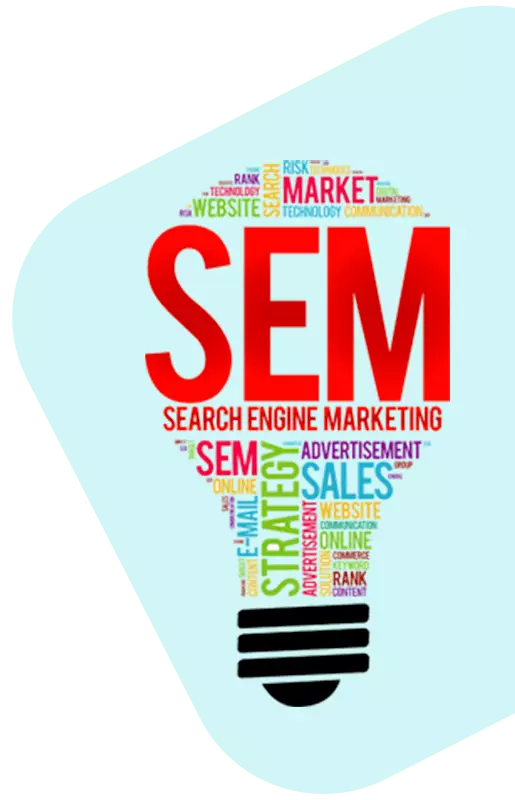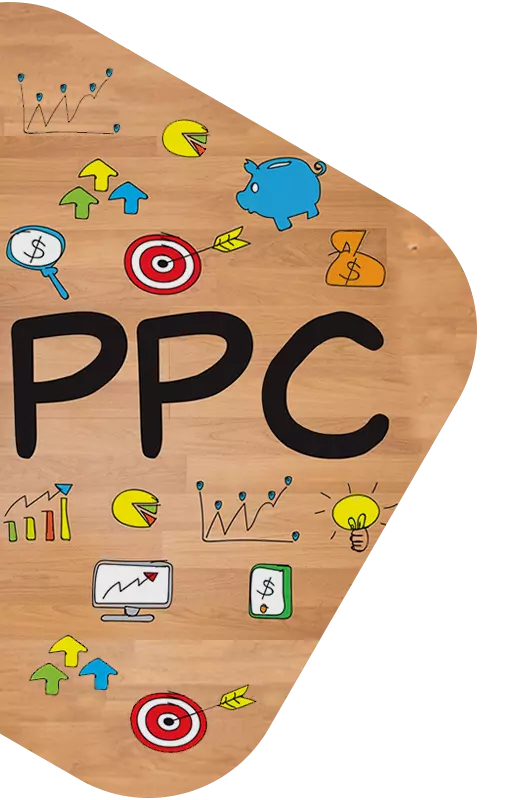Digital Marketing Services

In today’s digital landscape, having a robust digital marketing strategy is imperative for businesses aiming to enhance their visibility, build consumer trust, and attract customers. At Versatile, we specialize in crafting comprehensive digital marketing strategies tailored to your unique business needs and target audience.
We begin by strategizing, identifying your audience, and implementing an omni-channel approach to ensure your presence across various digital platforms. Our goal is to maximize your return on investment (ROI) while ensuring optimal targeting and budget allocation.
With our custom solutions, we cater to businesses of all sizes, aligning our strategies with your budget and objectives. Utilizing a range of insights and tools, we meticulously plan and execute digital marketing campaigns to drive results.
Whether it’s search engine optimization (SEO), search engine marketing (SEM), social media optimization (SMO), or pay-per-click (PPC) advertising, we employ a data-driven approach to deliver tangible outcomes for your business.

Search Engine Optimization

Search Engine Optimization (SEO) is the process of optimizing your website to improve its visibility and ranking on search engine results pages (SERPs). This involves a combination of on-page and off-page strategies aimed at making your website more relevant and authoritative in the eyes of search engines like Google, Bing, and Yahoo.
Key components of SEO include :
- Keyword Research: Identifying relevant keywords and phrases that your target audience is searching for online.
- On-Page Optimization: Optimizing various elements on your website such as title tags, meta descriptions, headings, and content to align with targeted keywords and improve search engine visibility.
- Content Creation: Developing high-quality, engaging content that provides value to users and encourages them to spend more time on your website.
- Link Building: Acquiring backlinks from authoritative websites to boost your website’s credibility and authority in the eyes of search engines.
- Technical SEO: Optimizing technical aspects of your website such as site speed, mobile-friendliness, and crawlability to enhance user experience and search engine visibility.
Search Engine Marketing

Search Engine Marketing (SEM) is a digital marketing strategy aimed at increasing a website’s visibility in search engine results pages through paid advertising. Unlike SEO, which focuses on organic search results, SEM involves paying for ad placements to drive targeted traffic to your website.
Key components of SEM include :
- Pay-Per-Click (PPC) Advertising: Bidding on keywords relevant to your business and paying for ad placements on search engine results pages. Advertisers only pay when users click on their ads, making PPC a cost-effective way to attract targeted traffic.
- Ad Copywriting: Creating compelling ad copy that entices users to click on your ads and visit your website. Effective ad copy should be clear, concise, and relevant to the user’s search query.
- Landing Page Optimization: Designing and optimizing landing pages to ensure a seamless user experience and maximize conversions. Landing pages should align with the ad’s messaging and provide relevant information to users.

Social Media Optimization

Social Media Optimization (SMO) refers to the process of optimizing your social media profiles and content to increase visibility, engagement, and brand awareness. SMO involves various strategies aimed at maximizing the impact of your social media presence and driving traffic to your website.
Key components of SMO include:
- Profile Optimization: Optimizing your social media profiles with relevant keywords, engaging visuals, and up-to-date information to attract followers and enhance brand credibility.
- Content Creation: Developing engaging and shareable content that resonates with your target audience and encourages interaction and engagement on social media platforms.
- Social Sharing: Encouraging users to share your content across social media platforms by integrating social sharing buttons, creating compelling calls-to-action, and fostering a sense of community among your followers.
Social Media Marketing

Social Media Marketing (SMM) involves using social media platforms to promote your brand, products, or services and engage with your target audience. SMM encompasses a range of strategies aimed at building brand awareness, driving website traffic, and generating leads or sales.
Key components of SMM include :
- Content Strategy: Developing a content strategy that aligns with your brand identity, target audience, and business goals. This may include creating and sharing a variety of content types such as blog posts, videos, infographics, and user-generated content.
- Audience Engagement: Engaging with your audience by responding to comments, messages, and mentions, and participating in relevant conversations on social media platforms. Building relationships with your followers can help foster brand loyalty and drive word-of-mouth referrals.
- Paid Advertising: Utilizing paid advertising options offered by social media platforms to target specific audience segments, increase brand visibility, and drive conversions. Paid advertising options may include sponsored posts, display ads, and social media influencer partnerships.

Pay per click

Pay-Per-Click (PPC) Advertising is a digital advertising model in which advertisers pay a fee each time their ad is clicked. PPC advertising allows advertisers to bid on keywords relevant to their business and display ads on search engine results pages or other digital platforms.
Key components of PPC advertising include :
- Keyword Research: Identifying relevant keywords and phrases that potential customers are searching for online. This involves conducting keyword research to determine which keywords have high search volume and low competition.
- Ad Campaign Setup: Creating PPC ad campaigns on platforms such as Google Ads, Bing Ads, or social media advertising platforms. Ad campaigns are structured based on targeted keywords, ad copy, bid strategy, and budget allocation.
- Ad Copywriting: Crafting compelling ad copy that effectively communicates your value proposition and encourages users to click on your ads. Ad copy should be relevant, engaging, and tailored to the user’s search intent.
- Bid Management: Monitoring and adjusting keyword bids to optimize ad performance and maximize return on investment (ROI). Bid management involves strategic bidding strategies to ensure ads are displayed in the most cost-effective manner possible.
Digital Marketing Process
- Understanding your Audience
- Analysing current channels performance
- Define success and set realistic goals
01
02
- Transform touch points to conversation
- Gain traction on social media sites
- Gain responses to call to action
- Convert conversation points to conversion & points
- Gain positions on search engines
- Develop brand loyalty
03
04
- Measuring the effectiveness of the strategies
- Data Visualization
- Identifying opportunities
- Stabilize position on search engines
- Establish some recognition as a thought leader
- Gain brand power
05
06
- Delivering value to your ideal audience
- Further enhance your campaign
- Expand networks exponentially through fan/follower networks
 +91 970 193 0011
+91 970 193 0011 +1 934 221 7261
+1 934 221 7261 +971 55 316 6156
+971 55 316 6156









